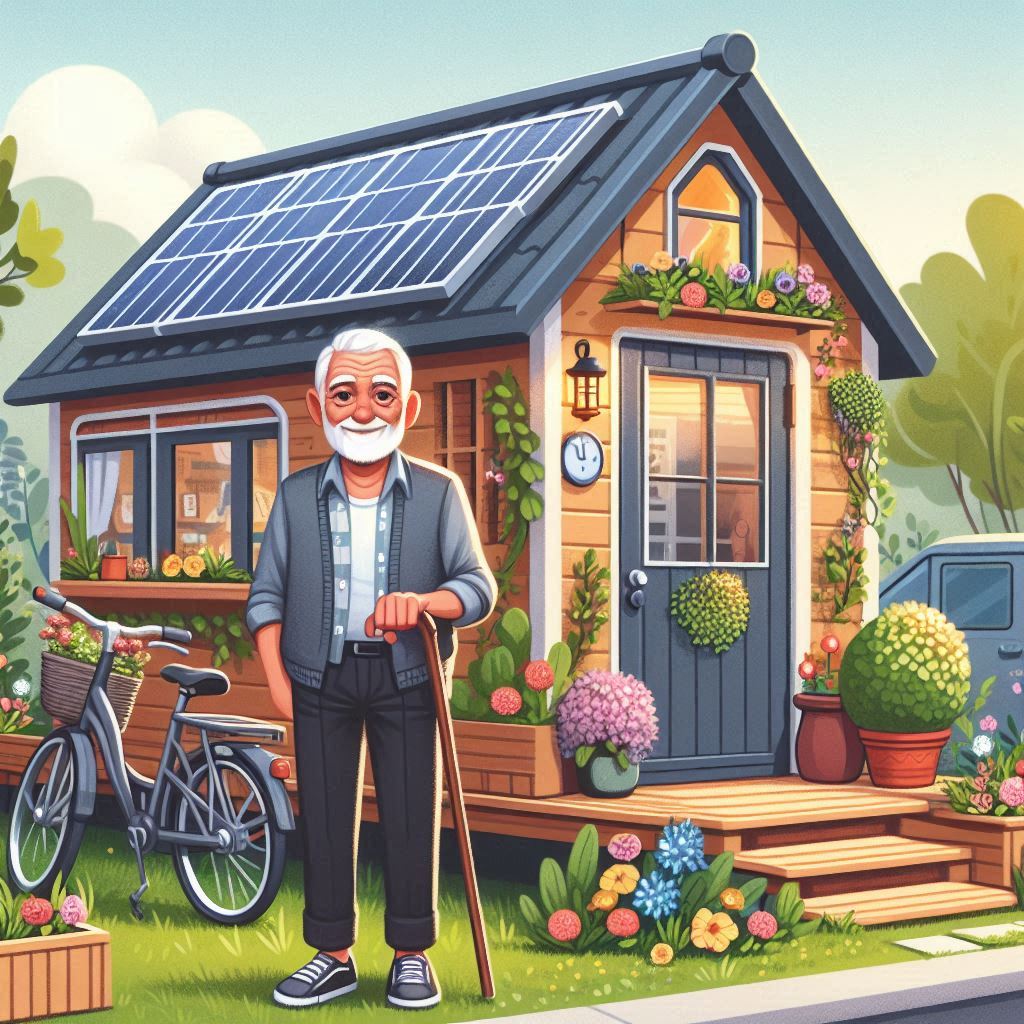
Tiny homes are exactly what they sound like: these are small-sized dwellings, typically ranging from 100 to 400 square feet. While that might sound cramped to some, many find that smaller living spaces promote a simple yet fulfilling lifestyle. If you have ever camped in an RV you will have an idea of exactly how small the square footage is.
The Tiny Home Choice
What makes a tiny home distinct is its efficient use of space. They often come equipped with multi-functional furniture, loft spaces for sleeping, and clever storage solutions that make the most of every square inch. The design focuses on minimalism and functionality, encouraging residents to prioritize essentials and declutter.
Despite their modern popularity, tiny homes are not a new concept. They’ve been around in some form for centuries but gained significant traction in the past decade due to the increasing cost of housing and a growing movement towards sustainable living. Many see them as a solution to housing issues, a way to reduce carbon footprints, and a path to financial freedom.
Downsizing & Shifting Mindset
In considering tiny homes, it’s important to weigh how these compact living spaces can cater to specific needs and preferences. They are not just about downsizing physically but also about shifting one’s mindset towards a new way of living. This change can be particularly beneficial for seniors seeking to simplify their lives without sacrificing comfort. You would be surprised how much extra “stuff” you have that you do not need when you start downsizing.
Benefits of Tiny Living for Seniors
Tiny homes can offer an array of financial advantages for seniors. With lower utility bills, reduced upkeep costs, and minimal property taxes, they have the potential to allow many retirees to stretch their retirement savings further.
The simplicity of maintaining a smaller space means less stress. For seniors, this meager upkeep can translate into more time spent on enjoyable activities rather than home maintenance chores. It also cuts out the clutter of unused belongings, creating a peaceful environment.
Mobility is another standout benefit. Many tiny homes are designed to be mobile, offering seniors the flexibility to change their location based on the season, proximity to family members, or personal preferences. This nomadic lifestyle choice can open new possibilities for adventure and discovery.
Living in a tiny home community can foster meaningful connections. These communities often provide supportive, social environments tailored to older adults, building a sense of camaraderie and security. Many seniors find that these interactions enrich their lives, offering friendship and support during this phase of life.
Challenges and Concerns for Seniors in Tiny Homes
Moving into a tiny home isn’t without its challenges, especially for seniors who may have specific needs and preferences. One of the most significant concerns is the limited space. While minimalism is part and parcel of tiny home living, not everyone finds the reduced square footage a comfy fit, potentially leading to feelings of confinement.
Health and accessibility raise valid concerns. Tight spaces could pose difficulty for seniors with mobility issues, possibly increasing the risk of trips or falls. This makes thoughtful design and layout crucial to ensure ease of movement within the home.
Legal And Zoning Issues
Legal and zoning issues can also complicate things. Not every area welcomes tiny homes with open arms. Certain locations may have restrictions on where such homes can be placed, which might limit options for preferred locations or favorable climates.
Amenities that are often taken for granted might not be as readily available. For example, having a washer and dryer in the home or ensuring proper heating systems can be harder to accommodate in smaller spaces. It’s critical to evaluate what essential amenities are necessary and how they will fit into a tinier structure.
Adaptations for Senior-Friendly Tiny Homes
Designing a tiny home with seniors in mind requires incorporating specific features that enhance comfort and safety. Ramps instead of stairs, along with wider doorways, can make navigation easier for those with mobility concerns. Slip-resistant floors are another vital consideration, as they help reduce fall risks.
Storage solutions need to be smart and accessible. Strategically placed cabinets and shelves ensure that items are within easy reach and the living space remains organized without feeling cluttered. Multifunctional furniture, like beds with drawers underneath or fold-down desks, also maximizes space efficiency.
Climate Control
Climate control is crucial for creating a comfortable living environment. Good insulation, along with efficient heating and cooling systems, keeps the home pleasant year-round, which is especially beneficial for seniors who may be more sensitive to temperature changes.
Integrating modern technology can make life much easier and safer. Installing features like automated lighting, thermostats, and security systems can give seniors a greater sense of independence while adding layers of convenience and safety.
Real-Life Experiences: Seniors Thriving in Tiny Homes
Stories from seniors who have embraced tiny living highlight the positive transformations that can come with downsizing. Many have found that shedding the weight of excessive belongings brings a newfound freedom. They often talk about how living with less has led to a more focused, meaningful lifestyle.
Some seniors have moved into tiny home communities, where they quickly become part of a close-knit group of residents. These communities often provide a support network that is particularly welcoming, creating an environment that fosters friendships and social connections.
Financially
Financially, many seniors report feeling more secure. The reduced expenses of living in a tiny home, from lower utility bills to diminished property taxes, allow them to stretch their retirement savings further, providing peace of mind in their later years.
Lifestyle changes often accompany this housing shift. With fewer possessions and smaller spaces to maintain, seniors find they have more time for hobbies, travel, or simply relaxing without the worry of extensive home maintenance. This ease of living is frequently highlighted as a significant benefit by those who have made the transition.
Final Thoughts: Is a Tiny Home Ideal for Seniors?
Tiny homes present a unique opportunity for seniors who are looking to simplify their lives, reduce expenses, and maintain independence. They offer meaningful benefits like lowered living costs and the chance to become part of supportive communities.
However, they also come with challenges that need careful consideration, such as ensuring accessibility and complying with local zoning laws. It’s vital to weigh personal needs and lifestyle preferences before making the leap.
Thinking through specific adaptations can make a world of difference. Modifications for accessibility, thoughtful storage solutions, and ensuring a comfortable climate are all part of making a tiny home truly suitable for this stage of life.
Ultimately, choosing a tiny home comes down to personal priorities. For some, the benefits of downsized living and a minimalist lifestyle might align perfectly with their life goals, while others might find it more convenient to explore alternative housing options.
Did you enjoy this post? Do you want to know when the next post comes out? Consider subscribing. I only send update emails once a week, usually on Friday. Try it out. You can unsubscribe at any time.
